Tips to Help You Save Time in the Kitchen
Here are some ways to make your cooking from scratch easier and save time in the kitchen. These tips will help you achieve your cooking at home goals.
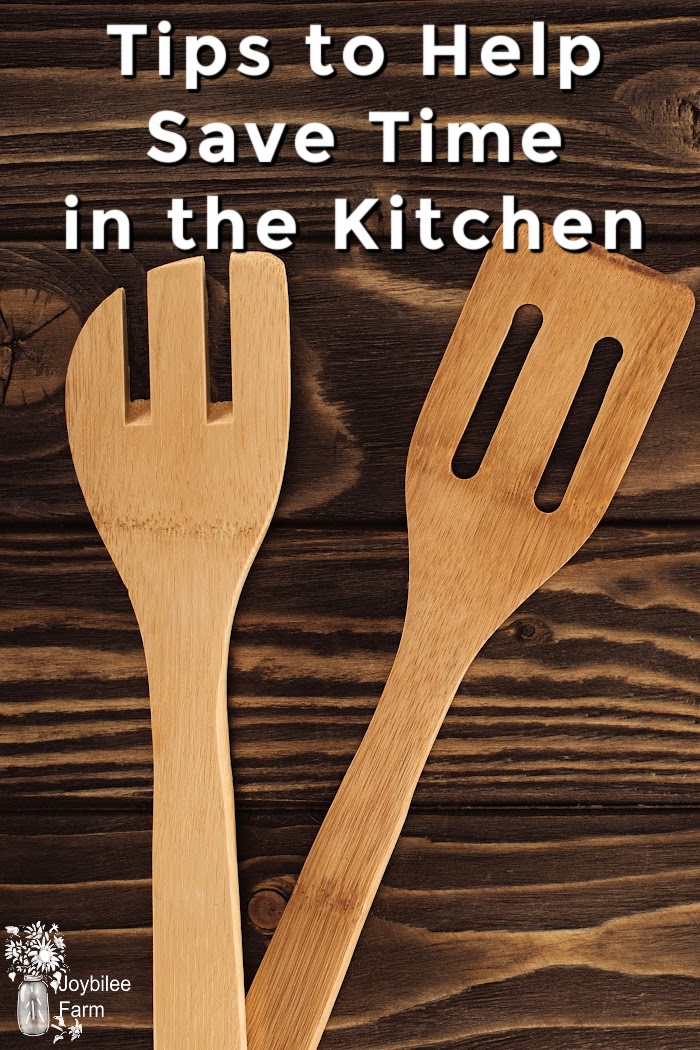
This is our third lesson. Are you working through each lesson, taking notes, and taking inventory of where you are at now? You don’t need to make major changes all at once. That can be overwhelming. Better to make small, incremental changes that stick, while you learn new skills that will move you further along the path that you want to be.
Lesson 3 – How to save time when cooking from scratch
Let’s look at ways to make your cooking from scratch flow easier. Grab your notebook and a pen and let’s look at some ways to strategize your time in the kitchen to save you time and help you achieve your scratch cooking goals. All these strategies may not apply to your situation, but take the ones that do and try to incorporate a few of them into your cooking habits. They will reward you with a calmer, more intentional daily cooking experience.
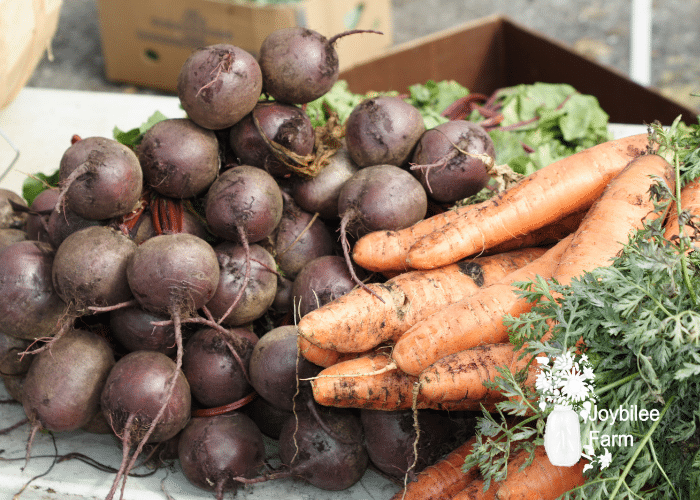
5 Tips to save time in your scratch cooking:
- Prepare vegetables for salads and raw eating as soon as you bring the produce in from the garden or home from the store. Washing, peeling, and preparing vegetables all at once saves clean up and puts them at the ready in the fridge, for quicker cooking. You can prepare veggies up to 3 – 5 days in advance. Keep in glass jars in the fridge, at the ready. Those 2 – quart jars are handy for this.
- Prepare the spice mixes that you use most often ahead of time – buy the spices in bulk, not in the tiny glass bottles. The spices will be fresher, with more antioxidants and more flavour because the turnover is higher in the bulk food stores, generally. Keep your mixed spices in glass jars in the fridge. Mix 1 to 3 cups at a time. Spices break down faster when kept in plastic bags, so transfer them to glass jars as soon as you get them home from the store. Store in a cool, dry place to retain freshness, if you don’t have space in your fridge or freezer. For optimal shelf life, you can store spices in glass jars in the freezer for optimum freshness.
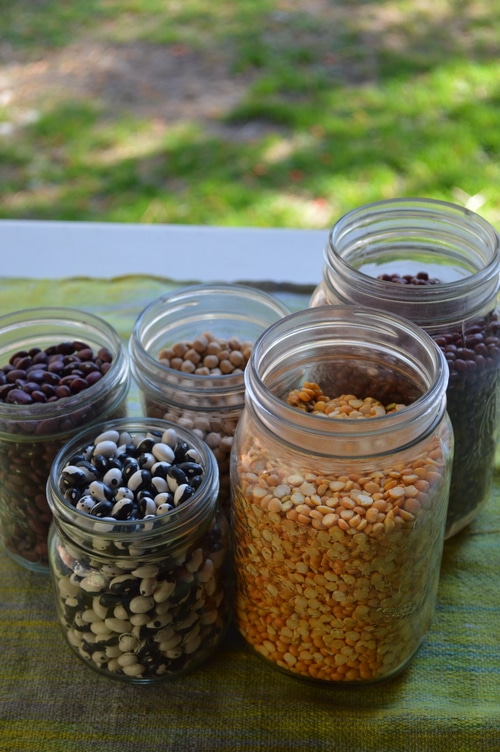
- Take out your beans or meat portion the night before. Defrost meat in the fridge or soak your beans overnight. This planning takes only minutes and saves you much time the next day. If you are using a slow cooker, get it started before work in the morning or no later than 10 am, if you work at home. If you are using a dutch oven on your wood stove or stovetop, start it after lunch. Bring it to a boil and then turn it down for a slow simmer – keep it just above a simmer. Add your rice or potatoes at 3 pm, if you are using a dutch oven. Add vegetables just before serving. If everything is prepared ahead of time this takes very little actual hands-on cooking time before the meal.
- When you cook a favourite meal – especially if you are cooking for just one or two people, triple the amount you cook and put aside 2 portions into a glass casserole dish or plastic container in the freezer, or put into glass canning jars and pressure can the portions. You now have two “fast” food meals ready to go for those days when you don’t have time to cook from scratch. You can package the individual parts of a meal in proportional amounts in recycled yogurt or cottage cheese containers and then package the whole meal in a plastic bag to make it easier to pull together on a difficult day. Keep it simple. If you do this 3 times a week – by the end of a week, you’ll have enough “fast” food to serve your family for a week with just reheating on the stovetop – less time than it takes to jump in the car and head out to a fast-food joint. Do this every week of this course and you’ll have home-cooked “fast” food to feed your family for a month. Remember to put a date on the containers so that you use up older food first.
- When you cook a roast or a chicken – cook 2. It uses the same amount of energy to cook 1 as to cook 2 in your oven. Take the second one and divide it into serving portions and freeze (or pressure can) for future meals – stir-fries, tacos filling, curry with rice – once the meat is cooked half the battle is won.
The goal isn’t to serve leftovers every day, but to save time in the kitchen on the days that you are working overtime on a project, or you just don’t have the energy to cook. On the days you have the energy and joy, cook from scratch. On the days you are drained, pull from your food storage – whether pressure canned or frozen. By the end of this month, you’ll have a strategy to win this battle and you won’t look back.
Bread baking
First, a caution about buying store-bought bread. It’s really easy to just pick up a loaf of multigrain bread at the store on your shopping trip, especially if only one or two people in your family eat bread. But the health consequences may be more costly than the $5 loaf of bread. The multigrain bread that I used to buy contained soy grits and soy flour, as well as canola oil – all GMO. GMO soy and GMO corn caused cancerous tumours in laboratory animals. My 20-year-old daughter developed hard lumps and swelling in her lymph nodes after ingesting the bread, which went away when the bread was taken away and came back the first time she ate it again. This tells me that she may be allergic to something in the bread, or that there are carcinogens in the bread. It’s not worth the risk to me when I can bake bread from scratch that I know has no GMOs or carcinogens. Listen to your body.
In the US, flour is still bromated, a chemical process that is illegal in Canada. Bromine mimics iodine and your thyroid will take it up instead of iodine, inhibiting your thyroid from doing its job. Chlorine also mimics iodine in your body so avoid food that has been bleached like white flour and white sugar.
You can save time baking your own bread by doing the mixing all at once and then keeping the raw dough in the fridge, breaking off the portion that you need for each day and baking just before the meal. The bread in 5 minutes a day recipe is easy to follow and has a nice sourdough flavour by the 2nd day.
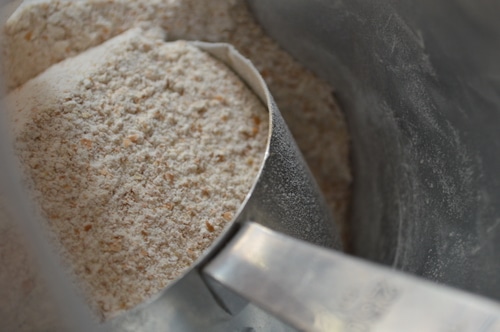
Faster bread machine bread
If you use a bread machine, instead of measuring out the dry ingredients for each loaf of bread into the bread machine just before baking, measure the dry ingredients for several loaves at once into individual Ziploc bags and have them ready to go. When you are ready to make a loaf of bread in your bread machine, anyone in the family can dump the contents of one Ziploc bag and add the appropriate liquid ingredients to the machine and press the start button. If several members of your family help you with this task, write the directions on the outside of the bag with a permanent marker, or as I did, have one master recipe taped to the fridge.
If you are gluten-free, you can apply the same principles and mix the dry ingredients for your favourite gluten-free bread into individual Ziploc bags, and have them at the ready to add to your bread machine or ready to mix and pop into a bread pan. If others help you in this job, write the necessary liquid ingredients on the outside of the bags, to make it easier.
Investing in quality equipment:
While you don’t need anything more than a cutting board, some sharp knives, pots and pans, and counter space to cook from scratch, a few modern tools can ease the stress on your wrists and hands, and save you time. These tools are optional:
- Kitchen Aid Mixer – I use mine for baking, for mixing salad dressings, bread doughs, and noodle doughs. You can add attachments for grinding grain, and making pasta, although I’ve found that these attachments are noisy though.
- Kitchen Aid Food Processor – essential for making raw fruit and nut bars like Homemade DIY Lara Bars, handy for chopping and shredding vegetables for salads, grating cheese, and shredding bread crumbs or chopping nuts. You can also use a kitchen mandolin for shredding.
- Bread Machine – not essential for baking bread but handy as it does both the mixing and the baking.
- Slow cooker – plug it in, add your ingredients, and walk away until 20 minutes before the meal. Add a salad and set the table and you are ready to serve it. Definitely, a very handy tool to have in a busy household. But not essential. Most of what you can cook in a slow cooker can be cooked on top of a wood stove or stovetop with careful attention to temperature. But very handy – especially if you don’t have a fully equipped kitchen. Useless in a power outage, though.
- Dutch oven – takes the place of a slow cooker off-grid and uses the heat of a burner or wood heater to keep a uniform heat in the pot. The enamelled cast-iron ones are best as they keep the food from scorching and retain the heat for a long time. You can also use them over a campfire. If you are using a dutch oven in place of a slow cooker, add the grain and vegetables later in the cooking time and let the meat come to almost done first. Or cook the rice and vegetables separately.
- Chef’s knife, paring knives, fillet knife, deboning knife – good quality knives are essential to all food preparations – you want one that will hold its edge. It can take the place of a food processor for some tasks.
- Wooden chopping board – plastic chopping boards retain bacteria in the cut scars. A wooden cutting board is naturally antibacterial. If you have a plastic cutting board, be sure to sanitize it after cutting meat on it. Sanitize by washing with soap and rinsing. Spritz with citrus vinegar cleaner. Wipe clean. Spritz with hydrogen peroxide. Wipe clean.
- Pasta Machine – get a good quality, Italian-made machine that is stainless steel.
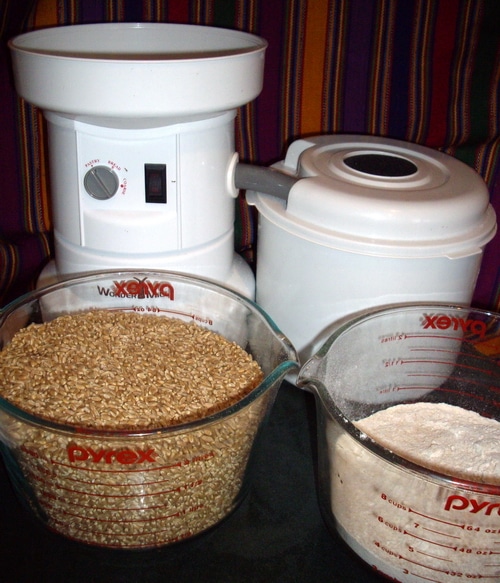
- Grain mill – I recommend The Whisper Mill because it is more efficient and much quieter than others I’ve tried.
- Pressure Canner – handy for processing dried beans and for preserving a few servings of meals if you don’t have a freezer. Video Tutorial on how to use a pressure canner coming next week.
- Deep freeze – the easiest way to preserve food for future meals. A small deep freeze can let you save meat that you buy on sale, vegetables and fruits in season, as well as a full month’s worth of your family’s favourite meals, at the ready for tough days. Not a good idea if you live off-grid. Coping Off-grid: Off-grid, made-ahead meals can be pressure canned and stored at room temperature in your cool room.
- Strategies to help you win in your efforts to cook from scratch require planning.
- When planning your dinner, take out beans or frozen meat the night before and soak beans overnight as necessary. Defrost the meat in the fridge overnight.
- Use a dutch oven or slow cooker to cook your meal during the day, while you do other things. When cooking your family’s favourite meals, triple the amount cooked, proportion the servings, and freeze (or pressure can) two extra meals for those times when you don’t feel like cooking or are too busy to cook.
- When cooking a roast or a chicken put two in the oven and divide and freeze the second one for future “fast” food meals.
- Invest in quality equipment that saves time and will last many years.
A quick recap of today’s lesson, How to Save Time in the Kitchen:
- Strategies to help you win in your efforts to cook from scratch require planning.
- When planning your dinner, take out beans or frozen meat the night before and soak beans overnight as necessary. Defrost the meat in the fridge overnight.
- Use a dutch oven or slow cooker to cook your meal during the day, while you do other things. When cooking your family’s favourite meals, triple the amount cooked, proportion the servings, and freeze (or pressure can) two extra meals for those times when you don’t feel like cooking or are too busy to cook.
- When cooking a roast or a chicken put two in the oven and divide and freeze the second one for future “fast” food meals.
- Invest in quality equipment that saves time and will last many years.
Which of these strategies will you add to your daily and weekly cooking routines to streamline your cooking from scratch efforts?


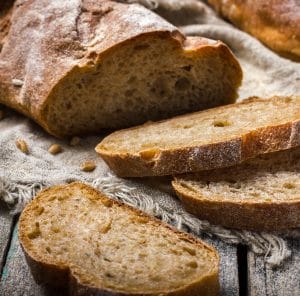
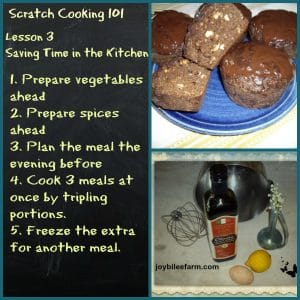

Leave a Reply